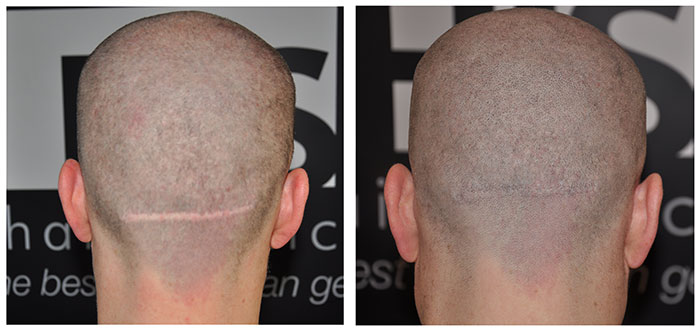It feels great to be able to receive effective treatment for hair loss. What once seemed an everyday worry soon becomes a distant memory. It is replaced by renewed confidence in oneself through a feeling of normalcy. Gone are the mornings of staring at the mirror to anxiously observe how much hair remains. There is only a brighter outlook on what there is to do for the day. Androgenic alopecia accounts for up to ninety percent of all hair loss cases reported. Imagine how many smiles can easily appear again once this is remedied.

Male pattern baldness usually begins its onset during a man’s late twenties. It is a gradual hair loss condition that will cause the hairline to recede in the temporal and frontal regions of the scalp. This will be noticeable only after many months of continuous balding. Some might even take years before there is any obvious recession. The vertex region will also lose hair beginning at its center. Its balding area will slowly grow larger as time goes by. The end result would be the loss of hair over the entire top of the scalp with only the lower regions at the back and sides of the head having hair. This is known as the donor area for the purposes of hair transplant surgery.
Going through an operation to reposition hair follicles from one area of the scalp to another is not easy. It requires invasive surgery and months of recovery time. The actual procedure and healing of the scalp is only part of the process. It also has to do the most important part, which is to successfully allow hair to grow in the transplanted region. Note that the hair follicles derived from the donor area will usually be lost after a month from the surgery. This needs time to integrate itself into its new location before it can grow new hair strands. There might even be a period where the scalp will exhibit “shock loss”. This is where the scalp will experience the loss of hair strands not only in the transplanted area, but also in the donor area as well due to the trauma it received from the surgery. It is important to be mentally prepared before embarking on such a procedure.
The strip method is one of the techniques used in hair transplant surgery. Otherwise known as follicular unit transplantation, it is a method that harvests a large amount of healthy hair follicles by making an incision at the back of the head measuring about twenty centimeters long. This must be contained within the donor area of the scalp because of the scarring that would most likely result. It provides a greater chance that it can be concealed by the patient’s existing hair when it grows out. There are times when this strip scar can still be exposed such as when hair is styled short. In these cases, scalp micropigmentation can be used to camouflage it.
Being able to expertly blend in with actual hair follicles is one of the strong traits of this procedure. Strip scars can be effectively concealed by scalp micropigmentation just like it does for balding. This must be designed in such a way as to cover not only the linear mark but the surrounding area as well. Those clients who would like to be on the cautious side choose to have their entire head layered with pigments right from the beginning. This would ensure that their scalp would be camouflaged from any future balding that their condition may cause. Scalp micropigmentation can easily be set in place because of its long lasting effects as an anti hair loss remedy.
SHARE

